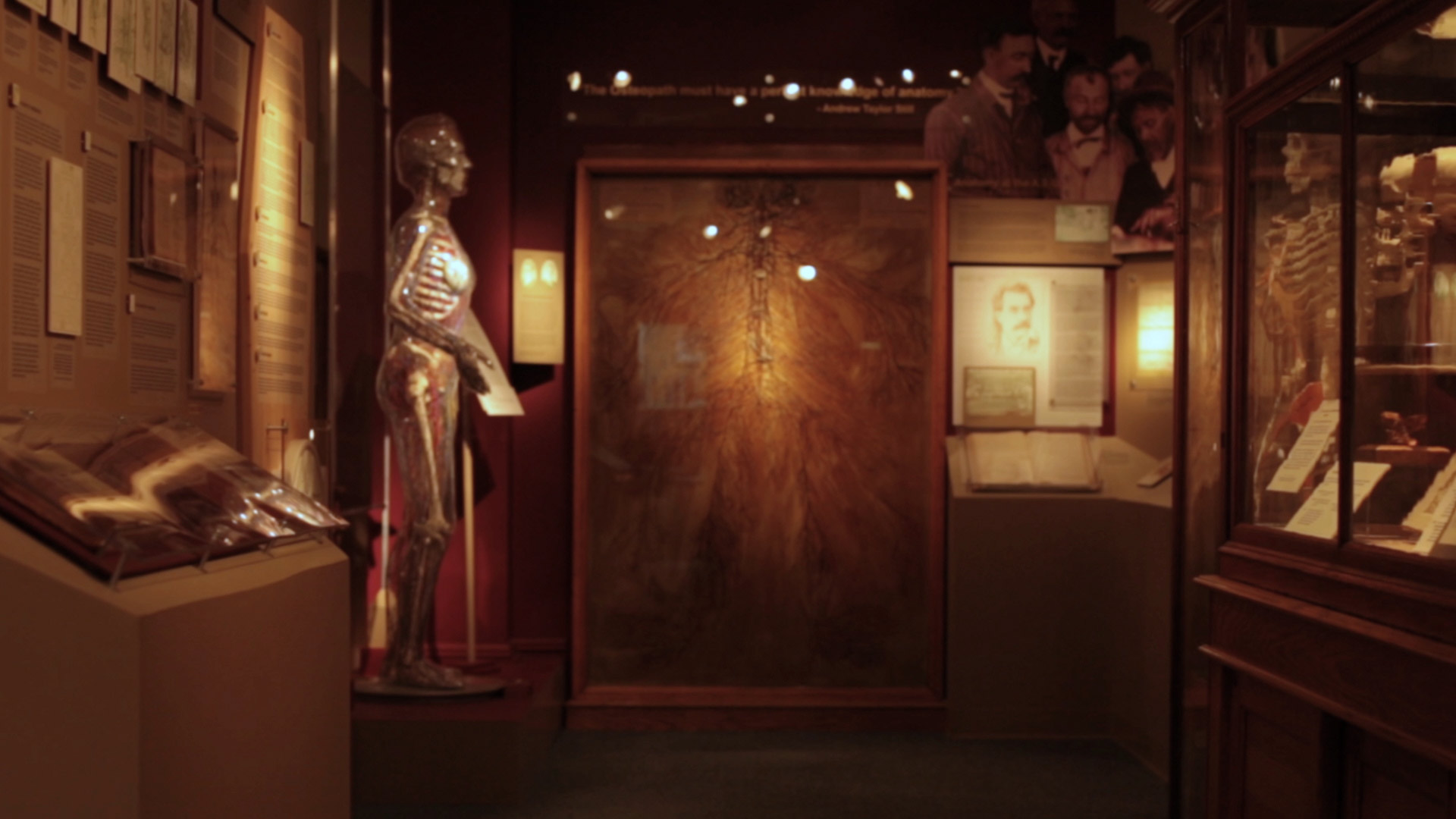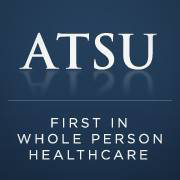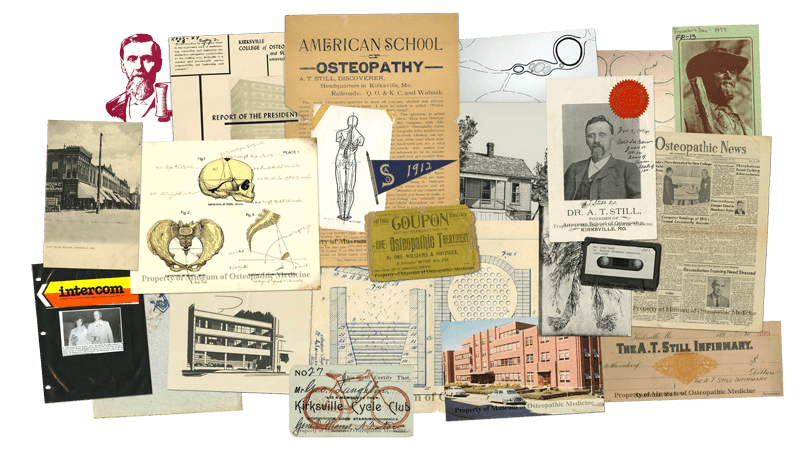Class photo graphics start as far back as 1894, and were produced twice a year for the spring and fall graduating classes.
The yearbook was first published in 1907 and has always been called the Osteoblast. The last edition was published in 1997. Until about 1970, the Osteoblast was published by the junior class. This makes finding the correct yearbook for a given class or individual difficult.
From 1907-1928, the year on the cover indicates the class that produced the book (juniors). This changes in 1929, for which there are two different editions. The volume we call 1929A was published in 1928 by the class of 1929 (juniors) for the class of 1928. The volume we call 1929B was published in 1929 by the class of 1930 for the class of 1929 (seniors). From 1930-1997, the year on the cover reflects the graduating class. To further complicate matters, the 1973 edition has “1972” mistakenly printed on the spine.
There are no Osteoblasts for 1920 (Class of 1919) or 1944-49 (Classes of 1944-49). The “War Babies” class, which graduated in 1919, is pictured in the 1921 yearbook.
| Summary: If you are interested in Class of | Look at |
| 1906-1927 (exc. 1919) | 1 year later 1907-1928 |
| 1928 | 1929A |
| 1929 | 1929B |
| 1930-1996 (exc. 1944-49) | Corresponding year |
For an individual’s activities, it is best to look at both the junior-year and senior-year editions.
Those interested in KCOM history and alumni need to remember the ASO/ATSCOS merger in 1922 and to look at the ATSCO yearbooks (Stilletto, 1923 and 1924) as well.
Composition Photos:
- Faculty and Students 1892-1893, 110 KB
- Winter 1892-1893, 76.5 KB
- February 1897-1899, 151 KB
- January 1898, 83.4 KB
- February 1898, 84 KB
- June 1899, 149 KB
- June 1899, 149 KB
- January 1900, 143 KB
- Faculty and Graduates June 1900, 135 KB
- June 1900, 133 KB
- January 1901, 118 KB
- June 1901, 136 KB
- February 1902, 138 KB
- June 1902, 135 KB
- January 1903, 129 KB
- June 1903, 134 KB
- June 1904, 122 KB
- Faculty and Graduates June 1904, 114 KB
- January 1905, 101 KB
- June 1905, 124 KB
- January 1907, 95.4 KB
- June 1909, 113 KB
- December 1912, 94.4 KB
- June 1912, 152 KB
- June 1913, 148 KB
- Panoramic June 1913, 68.4 KB
- January 1914, 65.7 KB
- January 1915, 120 KB
- January 1915, 65.2 KB
- June 1915, 101 KB
- June 1917, 40.2 KB
- January 1918, 151 KB
- June 1918, 75.5 KB
- 1926, 152 KB
- June 1928, 124 KB
- 1929, 120 KB
- 1930, 135 KB
- January 1937, 155 KB
- 1974, 139 KB
- 1975, 146 KB
- 1976, 148 KB
- 1977, 384 KB
- 1978, 156 KB
- 1979, 142 KB
- 1983, 94.1 KB
- 1984, 254 KB
- 1990, 149 KB
- 1993, 130 KB
- 1996, 118 KB
- 1995, 84.7 KB
- 1998, 126 KB
- 1999, 117 KB
- 2000, 117 KB
- 2001, 124 KB
- 2002, 145 KB
- 2003, 117 KB
- 2004, 117 KB
- 2005, 359 KB
Yearbooks
- 1907 Osteoblast, 245 MB
- 1908 Osteoblast, 254 MB
- 1909 Osteoblast, 66.4 MB
- 1910 Osteoblast, 80.1 MB
- 1911 Osteoblast, 152 MB
- 1912 Osteoblast, 99.3 MB
- 1913 Osteoblast, 182 MB
- 1914 Osteoblast, 195 MB
- 1915 Osteoblast, 190 MB
- 1916 Osteoblast, 156 MB
- 1917 Osteoblast, 632 MB
- 1918 Osteoblast 141 MB
School Catalogs
- 1897-1898 ASO, 27 KB
- 1898-1899 ASO, 13.7 MB
- 1899-1900 ASO, 283 MB
- 1900-1901 ASO, 229 MB
- 1901-1902 ASO, 262 MB
- 1902-1903 ASO, 162 MB
- 1903-1904 ASO, 307 MB
- 1904-1905 ASO, 19 KB
- 1905-1906 ASO, 29 KB
- 1906-1907 ASO, 23 KB
- 1907-1908 ASO, 21 KB
- 1908-1909 ASO, 14 KB




